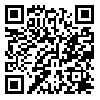دوره 23، شماره 2 - ( 4-1404 )
جلد 23 شماره 2 صفحات 164-153 |
برگشت به فهرست نسخه ها
Download citation:
BibTeX | RIS | EndNote | Medlars | ProCite | Reference Manager | RefWorks
Send citation to:



BibTeX | RIS | EndNote | Medlars | ProCite | Reference Manager | RefWorks
Send citation to:
Jafarzadeh H, Haresabadi F, Ghayoumi-Anaraki Z, Abbasi Shaye Z, Maleki Shahmahmood T, Hadadi Aval M. Phonological Measurement Indices in Hearing Impaired Children: Cochlear Implantation and Hearing Aids. Iranian Rehabilitation Journal 2025; 23 (2) :153-164
URL: http://irj.uswr.ac.ir/article-1-2098-fa.html
URL: http://irj.uswr.ac.ir/article-1-2098-fa.html
Phonological Measurement Indices in Hearing Impaired Children: Cochlear Implantation and Hearing Aids. مجله انگلیسی زبان توانبخشی. 1404; 23 (2) :153-164
چکیده: (2824 مشاهده)
Objectives: Phonological deficits are expected in people with hearing impairment because the auditory system is the basis for language acquisition. This study aims to compare phonological measurement indices in children with cochlear implants (CI), hearing aids, and normal hearing.
Methods: This cross-sectional study included 100 Persian-speaking children aged 3-6 years, including 25 children with severe hearing loss with bilateral hearing aids, 25 with unilateral CI, and 50 with normal hearing. Children with hearing aids and children with CI were selected by convenience sampling from the Naghma and Parvaneha Rehabilitation Center for hearing-impaired children in Mashhad City, Iran. The phonological subtest of the Persian version of the diagnostic evaluation of articulation and phonology (DEAP), which includes the two tasks of picture naming and picture description was performed, and the phonological indices, including phonological mean length of utterance (PMLU), phonological whole- word proximity, proportion of whole-word correctness (PWC), percentage of consonants correct, and percentage of vowel correct (PVC), were calculated. The performances of participants in the three groups on each index were compared in picture naming and description tasks. Also, the performance of the participants in the two tasks was compared in each group.
Results: A significant difference was observed in the mean scores of all phonological indices among the three groups (P<0.001), with children with normal hearing performing better than cochlear-implanted and hearing-impaired children, and cochlear-implanted children also had better performance than hearing children. Also, the difference in the mean of all phonological indices in the two tasks was only significant in the group with hearing aids (P<0.05).
Discussion: Children with cochlear implants, despite having a new and more useful technology than hearing aids, still have problems with phonemic accuracy, especially in whole-word indices, compared to children with normal hearing. Also, the difference in indicators between the two tasks in the group with hearing aids confirms the influence of phonetic context, which should be considered when evaluating and treating phonological deficits in these children.
Methods: This cross-sectional study included 100 Persian-speaking children aged 3-6 years, including 25 children with severe hearing loss with bilateral hearing aids, 25 with unilateral CI, and 50 with normal hearing. Children with hearing aids and children with CI were selected by convenience sampling from the Naghma and Parvaneha Rehabilitation Center for hearing-impaired children in Mashhad City, Iran. The phonological subtest of the Persian version of the diagnostic evaluation of articulation and phonology (DEAP), which includes the two tasks of picture naming and picture description was performed, and the phonological indices, including phonological mean length of utterance (PMLU), phonological whole- word proximity, proportion of whole-word correctness (PWC), percentage of consonants correct, and percentage of vowel correct (PVC), were calculated. The performances of participants in the three groups on each index were compared in picture naming and description tasks. Also, the performance of the participants in the two tasks was compared in each group.
Results: A significant difference was observed in the mean scores of all phonological indices among the three groups (P<0.001), with children with normal hearing performing better than cochlear-implanted and hearing-impaired children, and cochlear-implanted children also had better performance than hearing children. Also, the difference in the mean of all phonological indices in the two tasks was only significant in the group with hearing aids (P<0.05).
Discussion: Children with cochlear implants, despite having a new and more useful technology than hearing aids, still have problems with phonemic accuracy, especially in whole-word indices, compared to children with normal hearing. Also, the difference in indicators between the two tasks in the group with hearing aids confirms the influence of phonetic context, which should be considered when evaluating and treating phonological deficits in these children.
نوع مقاله: پژوهشي |
موضوع مقاله:
گفتار درمانی
دریافت: 1402/7/16 | پذیرش: 1402/11/28 | انتشار: 1404/3/11
دریافت: 1402/7/16 | پذیرش: 1402/11/28 | انتشار: 1404/3/11





